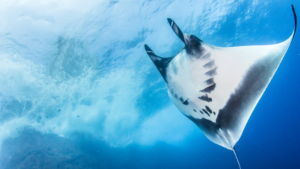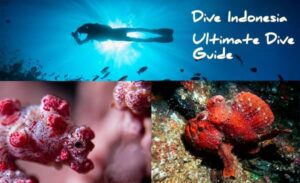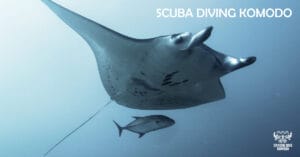7 Tips for Incredible Diving Experiences in Komodo
Scuba diving in Komodo offers an incredible experience with its diverse marine life, vibrant coral reefs, and diverse topography. Some popular dive sites include Manta Point, Castle Rock, and Crystal Rock, where you can encounter manta rays, colorful reef fish, and unique underwater rock formations. It’s important to choose a reputable dive operator, bring proper gear, respect the marine life a nd be prepared for the currents in the area.

- Choose the right time of year: The best time to dive in Komodo is from April to November when the visibility is good and the currents are mild.
Diving in Komodo during the dry season, which typically runs from May to October, can offer clear visibility and calm waters. The dry season also brings fewer crowds to the dive sites, making for a more enjoyable diving experience. However, it is important to keep in mind that some dive sites may have stronger currents during this time, so it is important to consider your level of experience and follow the guidelines of your dive guide.

- Get familiar with the dive sites and trust your dive shop about the spot of the day: There are many dive sites around Komodo, each with its own unique features and marine life.
Komodo National Park in Indonesia is known for its incredible dive sites, which offer a unique blend of stunning coral formations, diverse marine life, and dramatic landscapes. Some of the best dive sites in the park include:
Castle Rock: This site is known for its large schools of fish, including barracuda and snapper, as well as for its strong currents that attract large pelagics such as manta rays and sharks.
Batu Bolong: This site features a towering rock formation surrounded by vibrant coral and teeming with marine life, including large schools of colorful fish and occasional sightings of mantas and dolphins.
Crystal Rock: This site is famous for its crystal-clear waters and abundant marine life, including colorful schools of fish, large schools of barracuda, and the occasional hammerhead shark.
Manta Point: This site is a cleaning station for manta rays, making it a great place to see these gentle giants up close.
Police corner: This site is known for its strong currents and impressive topography, including steep walls, pinnacles, and swim-throughs. Marine life is abundant here, with frequent sightings of mantas, sharks, and other large pelagics.
These are just a few of the many fantastic dive sites in Komodo National Park that we will help you choose from on daily basis. With so many incredible locations to choose from, it’s no wonder that this area is considered one of the world’s top dive destinations.

- Bring proper gear or rent the proper equipment with you Dive center: Make sure you have the right gear, such as wetsuits, fins, masks and dive computers, for the conditions you’ll face.
It is important to bring proper gear or rent the proper equipment when diving in Komodo National Park. Diving in this area can be challenging, with strong currents and sometimes rough conditions, so it’s important to have equipment that is well-suited for these conditions. If you don’t already have your own gear, you can rent it from a dive center.
Here is a list of essential diving gear that you should bring or rent following our experience:
- Regulator: This is the device that provides air from the tank to your mouth.
- BCD (Buoyancy Control Device): This is the device that helps you control your buoyancy underwater.
- Wetsuit: A wetsuit provides thermal protection and helps to keep you warm in the water.
- Fins: Fins are essential for efficient swimming underwater.
- Mask: A good-fitting mask is essential for clear underwater vision.
- Dive computer: A dive computer is an important tool for managing your dive time and depth.
- Dive lights: Dive lights can be useful for exploring underwater caves and for night diving.
When renting gear, be sure to choose a reputable dive center that has well-maintained equipment and experienced staff who can help you select the right gear for your dive. It’s also a good idea to make sure that you are comfortable with the gear before you go on a dive, so be sure to try it out in a controlled environment before hitting the water.
Don’t worry: Dragon Dive rent the best diving gear in town, with a change of equipment every year and with the widest range of size to fit everyone.
![]()
- Hire a reputable guide: A knowledgeable guide can ensure a safe and enjoyable diving experience and help you find the best spots.
Hiring a reputable dive guide or dive center is a great idea when diving in Komodo National Park. A knowledgeable and experienced guide can help ensure your safety and show you the best dive sites in the area. A dive center can also provide equipment rental, air fills, and other services that you may need.
Here are a few things to look for when choosing a dive guide or dive center:
- Experience: Choose a guide or dive center that has a proven track record of providing safe and enjoyable dives. Look for guides and dive centers that are experienced in diving in the waters of Komodo National Park and are familiar with the local conditions.
- At Dragon Dive we trained all our local dive guide as certified divemasters with a minimum of 4 years of diving with our instructors/managers.
- Safety record: Make sure that the guide or dive center has a good safety record and follows established dive safety procedures.
- Still been no incident with Dragon Dive since we opened. Can’t say the same for the competitors around.
- Professionalism: Choose a guide or dive center that is professional and dedicated to providing a high-quality dive experience. Look for guides and dive centers that are passionate about diving and have a deep understanding of the underwater environment.
- We are all certified professionals, with all accredited certifications and a huge understanding of the diving industry. Our Tek certification is also proof to all of you as we are teaching very complicated and technical courses.
- Reviews: Read reviews from other divers who have used the guide or dive center. This can give you an idea of what to expect and help you make an informed decision.
- Look at our reviews. Only real one since 2015…
By choosing a reputable dive guide or dive center, you can be confident that you will have a safe and enjoyable dive experience in Komodo National Park. We will add something very important to this:
Please go only diving with the dive center which has permanent staffs

- Be prepared for currents: The currents in Komodo can be strong, so make sure you are comfortable diving in them.
The currents in Komodo National Park can be strong and unpredictable, so it’s important to be prepared for them when diving there. Here are some tips from dragon dive team to help you stay safe in the currents:
Know your limits: It’s important to have a good understanding of your own diving abilities and to know when to call it a day if you are feeling uncomfortable.
- Pay attention to the dive briefing we are giving: Your dive guide will give you a briefing before each dive, including information about the conditions, the dive site, the mapping and the currents. Pay close attention to this briefing and ask any questions you may have.
- Use a dive computer: A dive computer can help you manage your dive time and depth, and the compass can also give you information about your position.
- Stay close to your dive buddy: Diving with a partner is always safer than diving alone, and it’s especially important to stay close to your buddy when diving in strong currents.
- Use a dive reel or surface marker buoy: A dive reel or surface marker buoy can help you stay in control when diving in currents. Your dive guide will show you how to use these tools effectively.
By following these tips, you can stay safe and have an enjoyable dive experience in Komodo National Park, despite the strong currents.

- Respect marine life: Remember to keep a safe distance from marine life and avoid touching or disturbing their habitats.
- Respecting marine life is an important aspect of responsible diving. When diving in Komodo National Park, it’s important to follow these guidelines to help protect the underwater environment and the animals that live there:
- Don’t touch or disturb the marine life: Touching or disturbing marine life can stress the animals and damage their habitat. Keep your distance from marine animals and avoid shining lights directly at them.
- Don’t feed the marine life: Feeding marine life can alter their behavior and make them dependent on humans for food. It can also lead to increased competition for food and other resources.
- Avoid damage to the reef: Be mindful of your fins and other equipment and avoid touching or kicking the reef. Reefs are fragile environments and even small amounts of damage can have long-term impacts.
- Practice safe diving techniques: Safe diving techniques, such as proper buoyancy control, can help you avoid accidental contact with marine life and its habitat.
By respecting the marine life while diving, you can help protect the underwater environment and ensure that future generations of divers can enjoy the beauty of Komodo National Park.
- Go with a small group: Smaller groups are less disruptive to the underwater environment and allow for a more intimate diving experience.
Going with a small group when diving in Komodo National Park is a good idea for several reasons:
- Increased safety: Small groups are easier to manage and allow for more individual attention from the dive guide. This can help ensure that everyone stays safe and has a positive diving experience.
- More personal experience: Small groups tend to be more intimate and allow for a more personal interaction with the dive guide and other members of the group.
- Better for the environment: Small groups have a smaller impact on the underwater environment and can help reduce the stress on the marine life.
- Increased flexibility: Small groups tend to be more flexible and can allow for changes to the dive plan if needed.
By choosing to go with a small group, you can have a safer, more personal, and more environmentally friendly dive experience in Komodo National Park. At Dragon Dive we are offering a certified dive guide with a maximum of 4 divers per guide.








